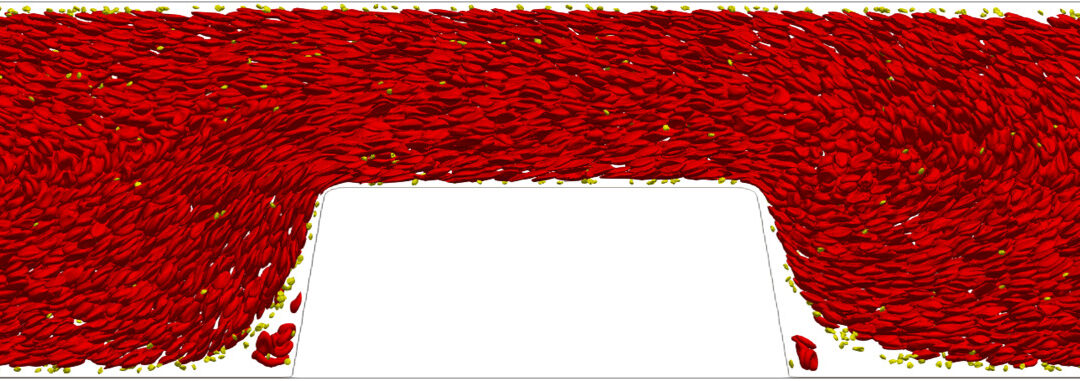
The influence of the flow environment on platelet aggregation is not fully understood in high-shear thrombosis. The objective of this study is to investigate the role of a high shear rate in initial platelet aggregation. The haemodynamic conditions in a microfluidic device are studied using cell-based blood flow simulations. The results are compared with in vitro platelet aggregation experiments performed with porcine whole blood (WB) and platelet-rich-plasma (PRP). We studied whether the cell-depleted layer in combination with high shear and high platelet flux can account for the distribution of platelet aggregates. High platelet fluxes at the wall were found in silico. In WB, the platelet flux was about twice as high as in PRP. Additionally, initial platelet aggregation and occlusion were observed in vitro in the stenotic region. In PRP, the position of the occlusive thrombus was located more downstream than in WB. Furthermore, the shear rates and stresses in cell-based and continuum simulations were studied. We found that a continuum simulation is a good approximation for PRP. For WB, it cannot predict the correct values near the wall.
For more details, please visit: https://royalsocietypublishing.org/doi/10.1098/rsfs.2019.0126

